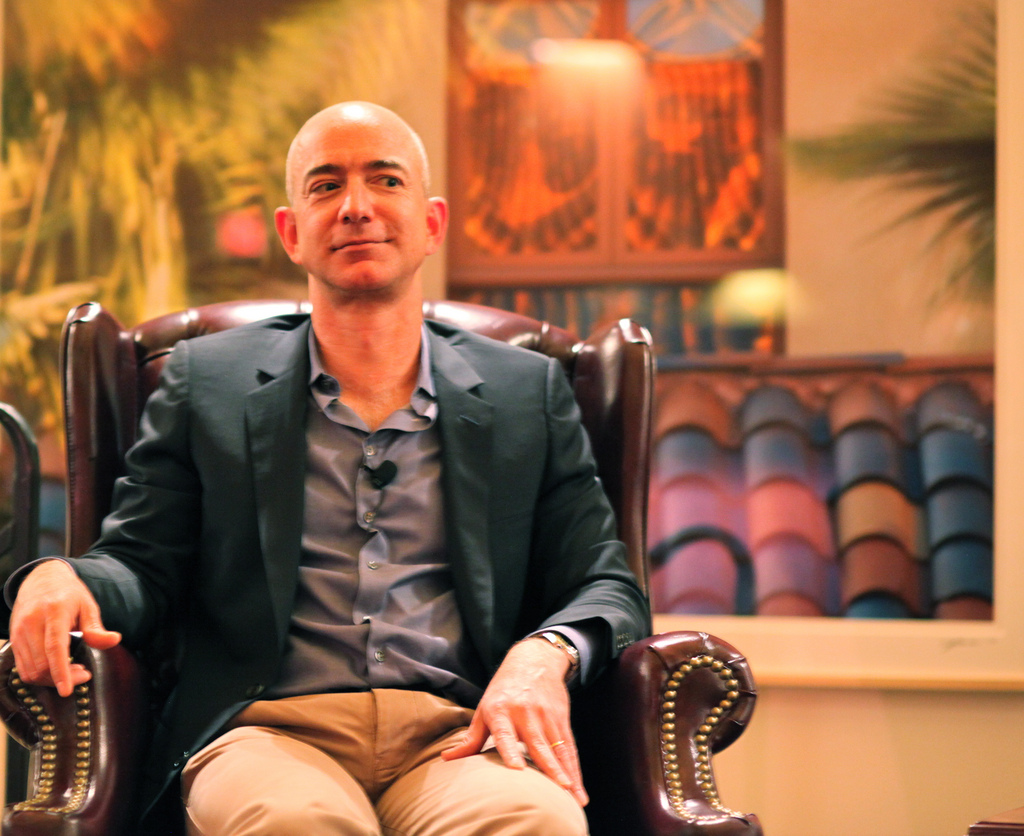Inside The Mind Of E-commerce Genius, Jeff Bezos
Partnered Content.
The story of Jeff Bezos is an unlikely one. The Amazon CEO and billionaire started off life in challenging circumstances. He was the child of a teen pregnancy, and he had a father who just wasn’t around for much of his youth.
But that didn’t stop Bezos from climbing the ranks. Initially, Bezos had thought that he would become a theoretical physicist, having accepted early entry into Princeton’s program. But it soon dawned on him that something far more interesting was going on in the related world of computers.
Back in the early 1990s, Bezos realized that internet usage was going up by more than 2300 per year. While many of his contemporaries thought that this was just a blip, Bezos projected that growth rate out into the future and realized that it was a massive business opportunity. Before the decade was out, he thought, hundreds of millions of people would be online, and the internet would become the biggest marketplace in the world.
Of course, history proved Bezos right. Amazon began selling millions of e-books online which people could order with the click of a button and have sent to their homes. Although Amazon didn’t make a profit until 2004, it was already a household name before the turn of the millennium.
Things weren’t always easy for the richest man in the world. Back in the early days, Bezos often wondered whether his company would ever make enough money to buy a forklift to organize the pallets in his warehouse. Now though, the company leads the world in e-commerce fulfillment, employing dozens of robots to scurry products to and fro in its warehouses.
The question, then, is what we can learn from Jeff Bezos about setting up e-commerce operations. What is it that he had that everybody else in the industry needs?
An Understanding Of How Technology Progresses

Jeff Bezos
The e-commerce industry is the byproduct of rapid technological development. It arose from the combination of computer networks, home PCs, fulfillment practices and the ability to showcase millions of products online. But even though it seems obvious in hindsight, it wasn’t so clear that anything of the sort would ever happen, even at the start of the 1990s.
The idea that you could just pick up a device and download a copy of the morning news or buy ebooks over the airwaves seemed laughable. But even by the early 1990s, the essential technology was in place to make it happen.
Bezos understood this. He saw how the improvements in bandwidth and rapid adoption of PCs by the general public was laying the groundwork for an internet shopping boom. He also saw how quick the adoption curve was for the web – that 2,300 percent figure mentioned earlier – which proved to him that there was consumer interest in the concept. All he had to do was figure out a way to make money from it, and he would be laughing.
In many ways, Bezos timed his strategy to coincide perfectly with the development of technology. A year after Amazon was founded, the internet went mainstream, and thousands of businesses and universities connect to one another over phone lines. What’s more, in those early days, there were very few companies actually selling anything online, meaning that Bezos had free rein.
Obsession With Customers
When you think about it, Amazon offers a very generic product: retailing services to online customers. So what is it that makes Amazon so popular and valuable?
It’s all to do with the company’s customer-first values. Unlike many businesses that claim to be customer-centric, Amazon has always gone out of its way to being entirely focused on the customer and has a list of innovations to prove it. For instance, filling out forms every time you want to buy something online is a real hassle – one that most customers could do without. Bezos realized that if he could make the buying process easier, he’d improve the customer experience and reroute customers from other sites to his. As a result, Amazon introduced the one-click buying option to their Kindle bookstore and later to their main website.
But Bezos didn’t stop at the shopping cart. He also realized that another customer bugbear was having to wait a long time before products arrived. Amazon, therefore, championed next-day delivery and is currently working on drones to get products to customers in as little as 15 minutes.
Seeing Opportunities In Places Where Nobody Else Looks
Perhaps the most complicated part of the entire e-commerce process is fulfillment. Making sure that right packages go to the right people is a difficult task – and one in which Amazon excels.
Now, though, Bezos wants to revolutionize the way fulfillment works – something which the vast majority of companies have left alone. Not only does he want it to be robotized at the warehouse level, but he also intends to create an Uber-like platform for delivery drivers. Using legacy companies to courier goods to customers is expensive. Most of those legacy companies, like FedEx and UPI, have significant overheads because of regional offices, marketing and so on which is then passed onto their customers. Bezos wants to get around this by setting up an Amazon delivery service which employs random people to deliver products in a similar way to how Uber organizes drivers to ferry people from A to B.
This is an example of where Bezos sees opportunities where nobody else looks. There are some problems with the service, such as drivers not turning up on time. But Bezos hopes that with the right incentives, we could have a fleet of Amazon delivery drivers driving around our cities, just like Uber cab drivers today.
Looking For The Next Horizon
Amazon was born of technological change. Thus, change is in the company’s DNA, and it realizes that if it is going to survive, it needs to continue to adopt new business models. Bezos has jumped on many emerging trends, including the health food trend by buying Whole Foods. These investments are about giving the company longevity in the future, not just in the here and now.
